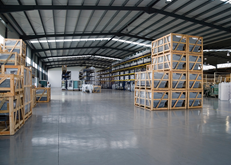When it comes to floor care, it’s important to make a good first impression. Shiny floors are literally a reflection of your business. In fact, it has been shown that facility appearance ratings can drop by as much as 75% if floor shine makes a bad first impression.
The truth is it’s less expensive to maintain a finish than to repair or replace a floor. So, why not heed those words and create a floor care program that shines favorably on your business and protects your bottom line?
The key to achieving clean, attractive looking floors is regular maintenance and choosing the right cleaning products. The following best practices can help keep finished floors looking great year round.
- Prevention: A floor matting program reduces the amount of soil, dirt and moisture that enters the building. Mats should be located inside and outside the building in high-traffic areas, such as the main entrance to the building and the entryway or foyer. Also, place mats throughout the building – near the steps, the elevator shaft or other strategic areas – to continue to capture incoming dirt. Typically, the more mats you have, the longer the life of the floor will be.
- Daily Routine/Maintenance: This should include dust mopping, damp mopping, auto scrubbing, low-speed buffing and high-speed burnishing.
- Interim Maintenance: This step involves a deep scrub and recoat. First, remove surface damage, then apply floor finish for a fresh new look. This provides shine restoration when buffing/burnishing is not enough.
- Restorative Care: Why strip and refinish? When the floor has darkened or yellowed and when a scrub and recoat will not give a new appearance, restorative care is the next step, which involves stripping, sealing and refinishing. Be sure to use a high quality stripper and choose the right finish for your floors.


